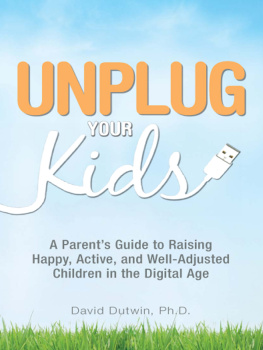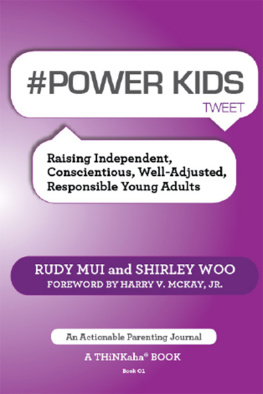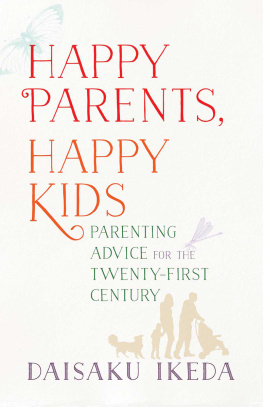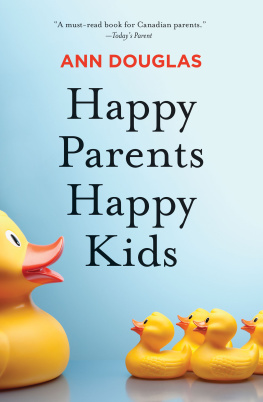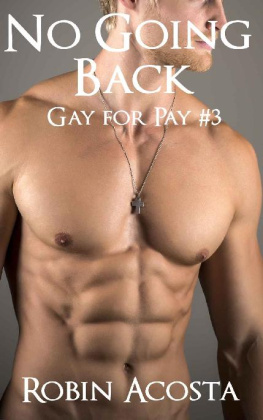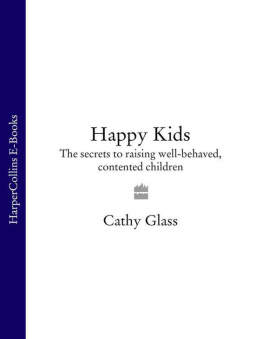The Happiest Kids in the World
How Dutch Parents Help Their Kids (and Themselves) by Doing Less
RINA MAE ACOSTA and MICHELE HUTCHISON

T HE H APPIEST K IDS IN THE W ORLD : How Dutch Parents Help Their Kids (and Themselves) by Doing Less
Copyright 2017 by Rina Mae Acosta and Michele Hutchison
Illustrations copyright Alyana Cazalet
Originally published in Great Britain as The Happiest Kids in the World by Doubleday, an imprint of Transworld Publishers in 2017. First published in North America by The Experiment, LLC, in 2017.
All rights reserved. Except for brief passages quoted in newspaper, magazine, radio, television, or online reviews, no portion of this book may be reproduced, distributed, or transmitted in any form or by any means, electronic or mechanical, including photocopying, recording, or information storage or retrieval system, without the prior written permission of the publisher.
The Experiment, LLC, 220 East 23rd Street, Suite 301, New York, NY 10010-4674 theexperimentpublishing.com
This book contains the opinions and ideas of its author. The author and publisher are not engaged in rendering medical, health, or any other kind of personal professional services in the book. The author and publisher specifically disclaim all responsibility for any liability, loss, or riskpersonal or otherwisethat is incurred directly or indirectly by the use and application of any of the contents of this book.
This book is a work of nonfiction based on the experiences and recollections of the authors and interviews with other parents and researchers. In some cases, names of people and identifying details have been changed to protect the identity of others. The authors have stated to the publishers that, except in some minor respects, the contents of this book are true.
Where the publisher was aware of a trademark claim, the designations have been capitalized.
The Experiments books are available at special discounts when purchased in bulk for premiums and sales promotions as well as for fund-raising or educational use. For details, contact us at .
Library of Congress Cataloging-in-Publication Data
Names: Acosta, Rina Mae, author. | Hutchison, Michele, author.
Title: The happiest kids in the world : how Dutch parents help their kids (and themselves) by doing less / Rina Mae Acosta, Michele Hutchison.
Description: New York : Experiment, [2017] | Includes bibliographical references and index.
Identifiers: LCCN 2016054448
Subjects: LCSH: Child rearing--Netherlands. | Parent and child--Netherlands.
Classification: LCC HQ792.N4 A26 2017 | DDC 649/.109492--dc23
LC record available at https://lccn.loc.gov/2016054448
Ebook ISBN 978-1-61519-391-2
Cover and text design by Sarah Smith
Cover background based on image Alexandra Soloviova | Shutterstock
Cover illustration by Alyana Cazalet
Author photograph by Elma Coetzee
Manufactured in the United States of America
Distributed by Workman Publishing Company, Inc.
Distributed simultaneously in Canada by Thomas Allen & Son Ltd.
For our kids
Rinas Family
Rina Mae

Im an Asian American writer who lives in a Dutch village with my husband, Bram, and our two boys. Originally from the San Francisco Bay Area, I love being an expat in Europe.
Bram
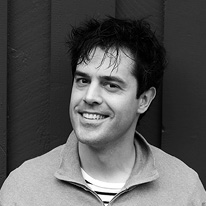
My husband, a Dutch entrepreneur who loves spending time with Julius and Matteo on his Papadag.
Bram Julius
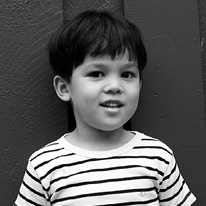
Our first-born son, a lively child who loves discovering new things, bedtime stories and hagelslag.
Matteo
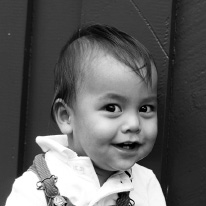
Our contented second baby, who wasnt the best sleeper at first but now loves a routine of eating, sleeping and playing.
Micheles Family
Michele
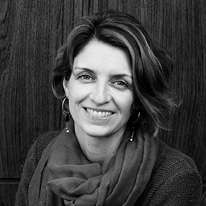
Originally from the Midlands (central England), I moved to Amsterdam when I was pregnant with my first baby. When Im not translating or writing, Im mainly gardening.
Martijn

My husband, a Dutch publisher and, ironically, a great Anglophile, who loves spending hours in the kitchen.
Ben
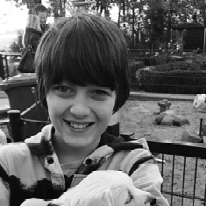
Our eldest child, who has recently started high school and is fanatic about dance.
Ina
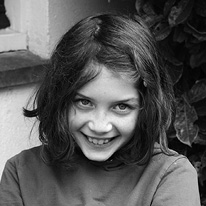
Our daughter, an energetic, sporty girl with a passion for math.
The best way to make children good is to make them happy
O SCAR W ILDE
Contents
Introduction
Two toddlers have just chased each other to the top of a jungle gym and are jostling to get down the slide first. Their mothers are lost in conversation on a nearby park bench, sipping their lattes and feeling the weak sun on their faces. In the distance, a dog barks and a little boy ambles along on his balance bike, trailed by his grandfather who is pushing a stroller. A gang of older children in tracksuits comes racing along the bike path, laughing and joking, hockey sticks dangling dangerously close to their wheels. They overtake a young mom, who is cycling more slowly, balancing a baby in a seat on the front of her bike and a toddler on the back. A group of girls is playing monkey-in-the-middle on the grass, their joyful shrieks filling the air. Not far away, some boys are perfecting their skateboarding moves. None of the school-age children are accompanied by adults.
This happy scene isnt from a movie. Its just a regular Wednesday afternoon in springtime in Amsterdams Vondelpark, a scene thats enacted all across the Netherlands every day.
In 2013, a UNICEF report rated Dutch children the happiest in the world.and Risks, as well as for Education (a category in which the US came in twenty-seventh). When it came to Dutch children rating their own happiness levels, more than 95 percent of them considered themselves happy. Several other research surveys have likewise highlighted the positive benefits of growing up in Holland the OECD Better Life Index and the World Health Organization, for example. (The OECD is an organization promoting economic and social well-being around the world.) The UNICEF report was a follow-up to one conducted in 2007, in which the Netherlands was first heralded as a prime example of childhood prosperity. The US and the UK ranked in the two lowest positions.
Next page


